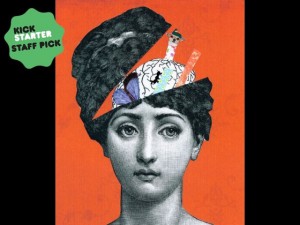Do store brands of dietary supplements contain the ingredients the labels claim?, asked scientists from The New York attorney general’s office. In analysis of supplements from Walmart, Target, GNC, and Walgreens, they found that only 21% of the supplements did contain the ingredients listed and that “most” contained ingredients not included on the label. The resulting response has included furor over the attorney general’s testing methods as well as people claiming that these results support what they knew all along. Amid all the outrage, some interesting points have caught my eye. Here’s what I found most interesting:
How Not to Test a Dietary Supplement in The New Yorker examines whether DNA barcode testing is an accurate way to assess the ingredients of supplements. (Tammy Rome, an herbalist and writer for Migraine.com, argues that it is not.)
Your Vitamins May Be Lying to You: Why Big Herba is Out of Control, in Salon, carries important information far beyond the sensational headline: “The very same mega-companies with gigantic chemical labs that make drugs are cooking up vitamin and herbal supplements labeled with sunny terms like ‘natural’ and ‘wholesome.’ Pfizer, Unilever, Novartis, GlaxoSmithKline and other big pharmaceutical firms make or sell supplements. Procter & Gamble Co. and Arm & Hammer are also in on the action. Wall Street is getting in on the game, too: the Carlyle Group, a private-equity titan, owns NBTY (formerly Nature’s Bounty), whose brands include Nature’s Bounty, Sundown Naturals, Puritan’s Pride, and Vitamin World.”
People take herbs and supplements for a variety of reasons, only one of which is distrust of the pharmaceutical industry. Still, if that’s important to you, then you’ll want to do careful research to find out if you’re supporting Big Pharma when purchasing supplements. Other people will seek out supplements sold by pharmaceutical companies, assuming that they have more rigorous scientific and safety standards than smaller, less known companies.
In Be Careful Where You Buy Your Herbal Products!, headache specialist Alexander Mauskop, M.D., discusses the supplements he recommends and says that his preferred brand is Nature’s Way.
As so often happens, I’m left with no answers, just more questions. First, what about non-store brands? Does Nature’s Way, for example, contain the DNA of the listed ingredients? If so, it supports the idea that store brands could be lacking, though even that raises additional questions. If not, we’re still left to wonder if the testing methods were inaccurate or if all supplements or bogus or something in between. Also, if the pharmaceutical industry plays a large role in the supplement industry, does that make supplements more or less reliable, or does it make no difference? From my reading today, it appears that how you answer that question depends on your beliefs about Big Pharma. Finally, does this even matter? Will it change consumers’ purchasing behaviors? Will it just increase the divide between those who think supplements are the best and those who believe they’re hogwash? Will people become even more invested in their existing opinions, as studies have found happens when people who are anti-vaccination are shown pictures of children with the disease they aren’t vaccinating for?
What’s your reaction to the news? Will it change the way you think about supplements or where you buy them?
 Are you eager to get your hands on a transcranial magnetic stimulator to treat migraine? The Spring TMS, which received FDA approval last May, won’t be available to patients until the completion of a post-approval study to determine how to use the Spring TMS most effectively. And the study can’t be completed until more participants are recruited. You can try the Spring TMS for free and help bring it closer to availability to others by participating in the study.
Are you eager to get your hands on a transcranial magnetic stimulator to treat migraine? The Spring TMS, which received FDA approval last May, won’t be available to patients until the completion of a post-approval study to determine how to use the Spring TMS most effectively. And the study can’t be completed until more participants are recruited. You can try the Spring TMS for free and help bring it closer to availability to others by participating in the study.

